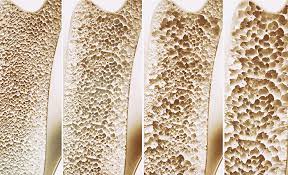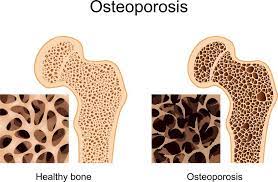Dr. David Samadi : Besides women, osteoporotic fractures are risky for men too
As men age, their bones become weak and porous from decades of neglect to bone health. It’s time men are included in the conversation.
This is the latest news from a study conducted by The National Osteoporosis Foundation that reviewed 2016 data from state-by-state information of Americans insured by Medicare. The findings showed that women are not the only individuals who are at risk of an osteoporotic fracture. Men too, are just as vulnerable. As men age, their bones become weak and porous from decades of neglect to bone health. It’s time men are included in the conversation with their healthcare professionals about becoming aware and educated on ways to improve bone strength and overall health.
Osteoporosis and men
Often referred to as the “silent disease” osteoporosis can progress with few if any symptoms until a bone is broken. While women are the main victims of this progressive disease, men are less likely to develop the disease for several reasons – they have a larger skeleton, bone loss begins at a later age and progresses more slowly in men than in women and men face no period of rapid hormonal change as women do during the transition to menopause. But, as the lifespan of men continues to rise, the incidence of osteoporosis in men is rising right along with it. Millions of men have low bone mineral density putting them at risk of developing osteoporosis. If a man has a hip fracture, they are more likely to die as a result.
Study findings
Osteoporosis continues to be diagnosed predominately in women (the 2016 study found that 912,000 women on Medicare had a fracture compared to the 381,000 men), however, it also pointed out that there are significant gaps of Medicare coverage in offering bone mineral density (BMD) testing or screening for men (just 5% compared to 9% of women) in the six months following a fracture.
This creates a problem. The study estimates that 15% of patients with a fracture will likely suffer additional fractures. But even if just one-fifth of second fractures could be prevented, it’s projected that would save $1.1 billion in Medicare spending within three years post-fracture.
Because of these findings, The National Osteoporosis Foundation has developed the following recommendations across the board for Medicare recipients to benefit both women including men:
• To reverse cuts to Medicare payment rates for osteoporosis screening limiting access
• To ask Congress to make changes to Medicare payments to incentivize widespread use of model secondary fracture prevention/care coordination practices for beneficiaries who have suffered an osteoporosis-related fracture and are thus at risk for another fracture.
• To ask Congress to mandate and fund a national education and action initiative aimed at reducing fractures among older women and men.
Prevention and treatment of osteoporosis for men
If osteoporosis is detected before significant bone loss has occurred it can be effectively treated.
But currently there are no official recommendations for osteoporosis screening in men. This leaves screening decisions in the hands of men’s physicians or the man himself in asking about whether he should be screened for osteoporosis or not. The Endocrine Society which represents physicians and scientists specializing in hormonal issues does have guidelines for men when it comes to osteoporosis:
• All men 70 and older should have a bone density test of the hip and spine. Any man between the ages of 50 to 69 who have additional risk factors such as low body weight, hypogonadism, long-term use of corticosteroids or a history of alcohol abuse, should be screened.
• Men found to be at high risk for fractures based on their bone density and clinical risk factors should be treated with medication and monitored with repeat testing every one to two years.
• At-risk men should obtain 1,000 to 1,200 milligrams of calcium a day – from food first, then supplements if needed after they discuss this with their doctor.
• All men should do 30 to 40 minutes of weight-bearing exercise three or four times a week.
• Alcohol intake should be kept at moderate consumption of no more than 2 drinks a day and men who smoke should quit.
• Men with low blood levels of vitamin D should take a vitamin D3 supplement after getting their doctor’s approval and recommendation. Doses of 1,000 to 2,000 IU a day are usually enough to get blood levels to 30 ng/ml or above which is considered optimal. Some men, however, may need larger doses.
Dr. David Samadi is the Director of Men’s Health and Urologic Oncology at St. Francis Hospital in Long Island. He’s a renowned and highly successful board certified Urologic Oncologist Expert and Robotic Surgeon in New York City, regarded as one of the leading prostate surgeons in the U.S., with a vast expertise in prostate cancer treatment and Robotic-Assisted Laparoscopic Prostatectomy. Dr. Samadi is a medical contributor to NewsMax TV and is also the author of The Ultimate MANual, Dr. Samadi’s Guide to Men’s Health and Wellness, available online both on Amazon and Barnes & Noble. Visit Dr. Samadi’s websites at roboticoncology and prostate cancer 911.
David Samadi
David Samadi
+1 3475330444
email us here
men are also susceptible to osteoperosis, get tested to prevent future fractures
Legal Disclaimer:
EIN Presswire provides this news content "as is" without warranty of any kind. We do not accept any responsibility or liability for the accuracy, content, images, videos, licenses, completeness, legality, or reliability of the information contained in this article. If you have any complaints or copyright issues related to this article, kindly contact the author above.



